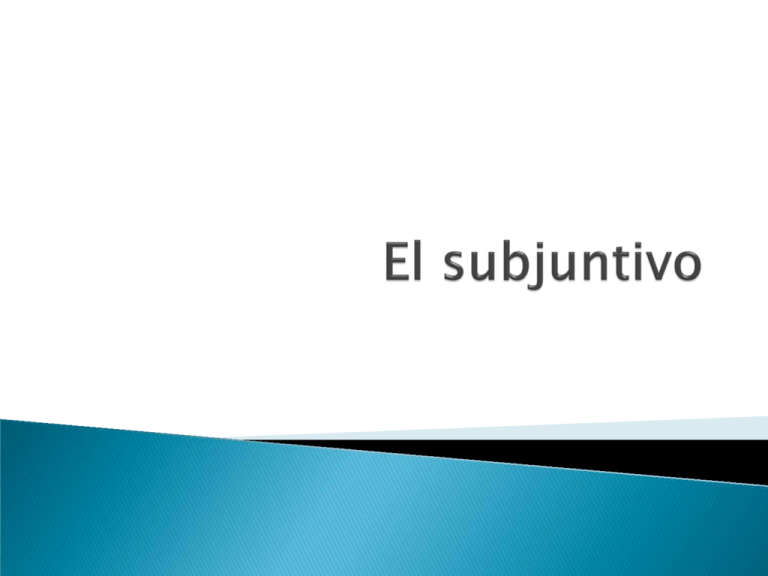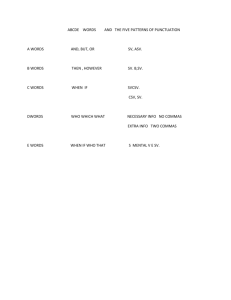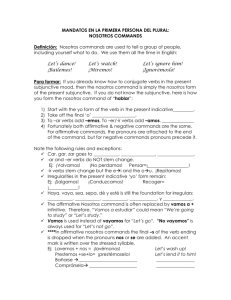El imperativo
advertisement

The subjunctive is a verb mood, not a tense. The indicative is also a verb mood. Therefore, we will be working with 2 present tenses. ◦ The present indicative ◦ The present subjunctive ◦ Start with the Yo form, present indicative ◦ Drop the Yo ending (o, oy) ◦ Reverse the endings Ar verbs will use –e endings as the new ending to the stem Er/Ir verbs will use –a endings as the new ending to the stem ◦ Hablar Hablo Habl hable, hables, hable, hablemos, hablen ◦ Comer Como Com coma, comas, coma, comamos, coman ◦ Decir Digo Dig diga, digas, diga, digamos, digan If the verb has a stem-change in the yo form, you still include that stem-change in the subjunctive, except in Nosotros, unless…. Unless it is an –ir stem-changing verb, then you make a one-letter stem-change in the nosotros form. ◦ Dormir durmamos Pedir pidamos Any spelling change will affect all conjugations, including nosotros. Verbs ending in –car will change to qu Verbs ending in –gar will change to gu Verbs ending in –zar will change to c Verbs ending in –ger will change to j Verbs ending in –guir will change to g ◦ Sacar saque ◦ Llegar llegue ◦ Organizar organice ◦ Proteger proteja ◦ Extinguir extinga Estar ◦ esté, estés, esté, estemos, estén Ir ◦ vaya, vayas, vaya, vayamos, vayan Ser ◦ sea, seas, sea, seamos, sean Dar ◦ dé, des, dé, demos, den Saber ◦ sepa, sepas, sepa, sepamos, sepan These 3 rules for the subjunctive will apply most of the time. There are always exceptions you will have to learn. 1. There will be 2 independent clauses in the sentence. (usually separated by que) 2. Each clause will have a different subject. 3. One clause (usually the first) will contain a phrase or word that requires the subjunctive use in the other clause.







